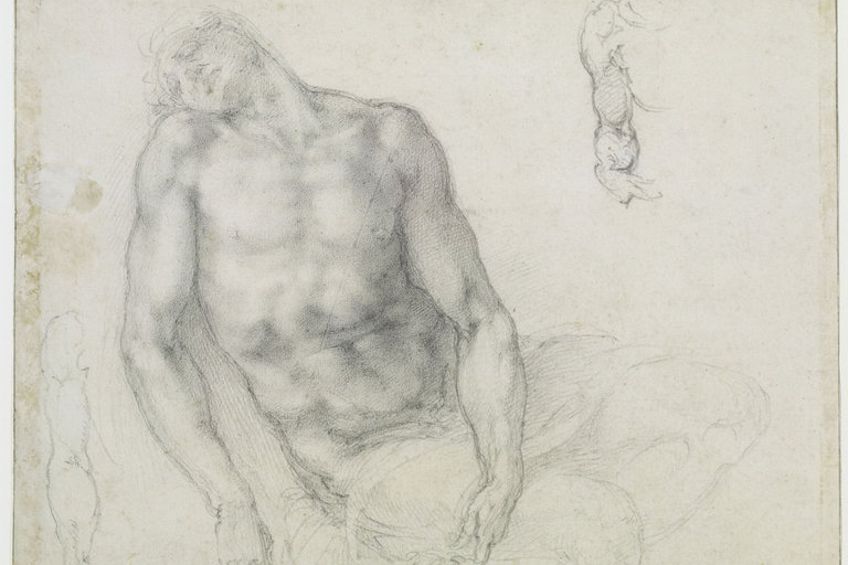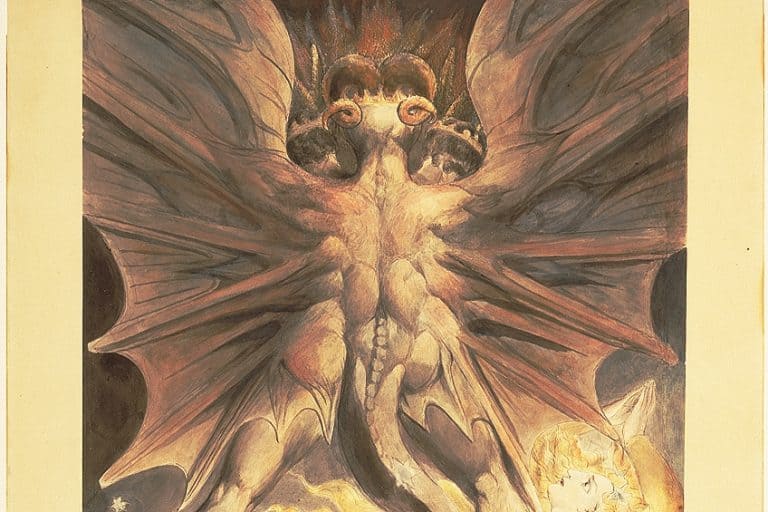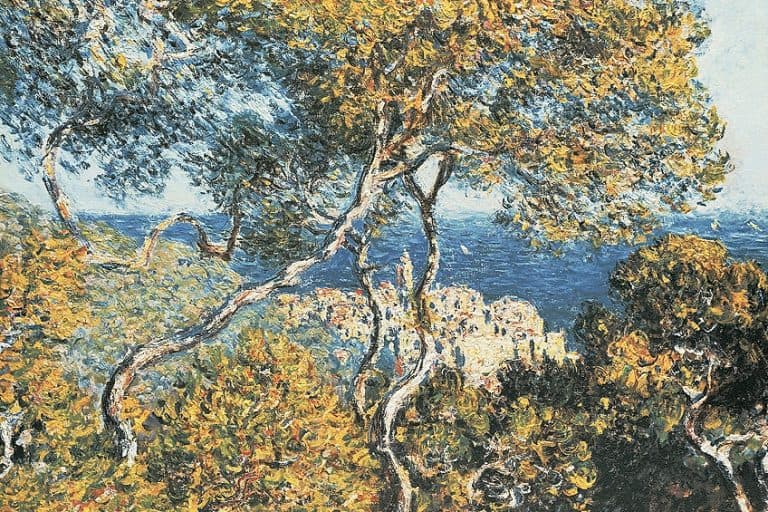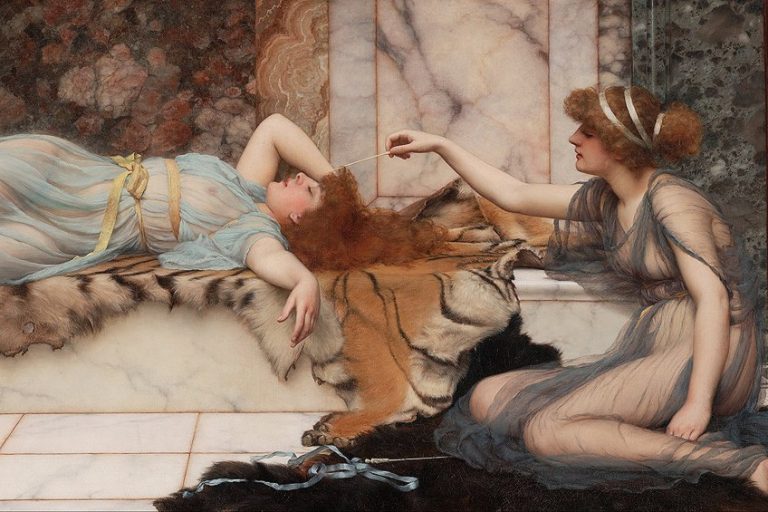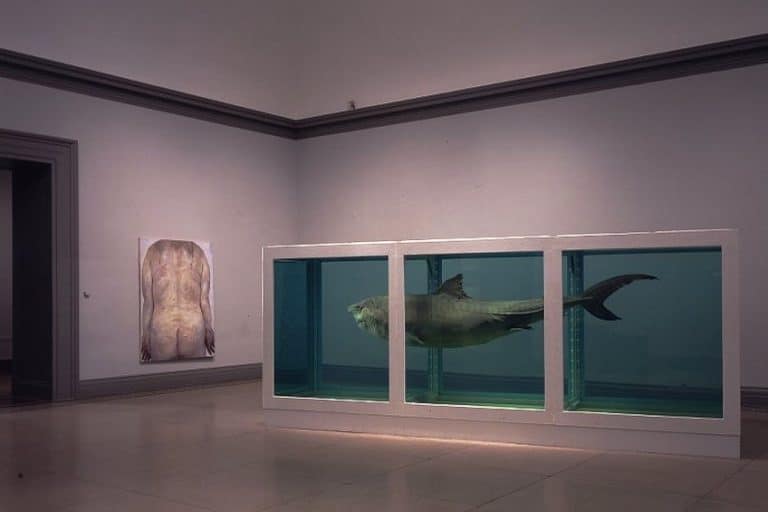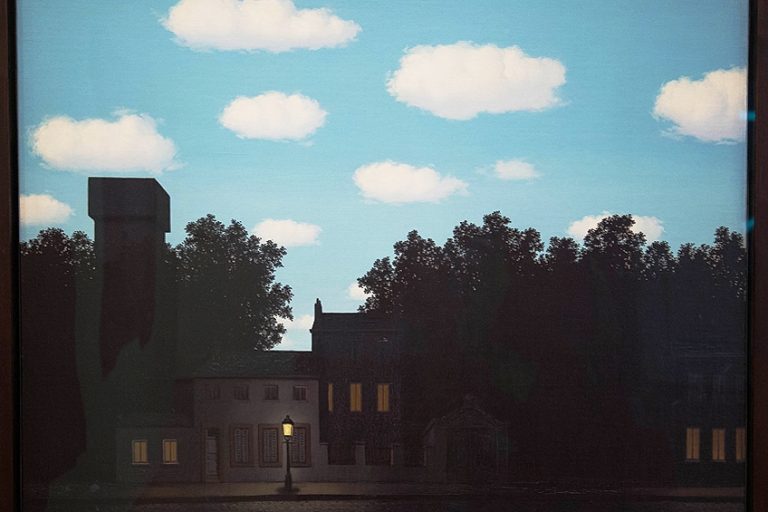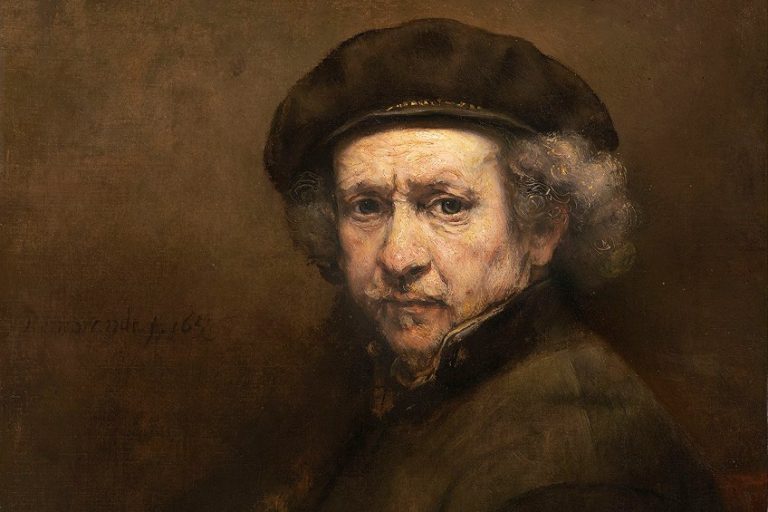Michelangelo Drawings – Famous Michelangelo Sketches
Michelangelo was a man of many talents, renowned for his skills in a variety of disciplines such as painting, sculpting, and architecture. Michelangelo’s drawings were a crucial starting point in his creative process for all of the abovementioned disciplines. Michelangelo’s sketches served as a canvas for his ideas before committing them to real-life application. Why did Michelangelo destroy his drawings, though, and what was the subsequent legacy of Michelangelo’s pencil sketches? Let’s find out the answers to these questions and more in the article below!
The Importance of Michelangelo’s Drawings
Michelanegelo’s sketches were an integral part of his overall oeuvre, as they were where his masterpieces were conceptualized. In his days as a student, Michelangelo’s pencil sketches served as a way for him to emulate the styles of other artists, as well as to quickly capture the forms of reality around him. Michelangelo’s figure drawings were of particular importance to the artist, as he was fascinated by the human form and wanted to portray it as accurately as possible. He even went as far as dissecting corpses to gain a better understanding of the body’s complex layers of muscles, tendons, bones, and skin. Initially, Michelangelo’s drawings were rendered in ink and pen but grew to love the effectiveness and availability of natural chalk.
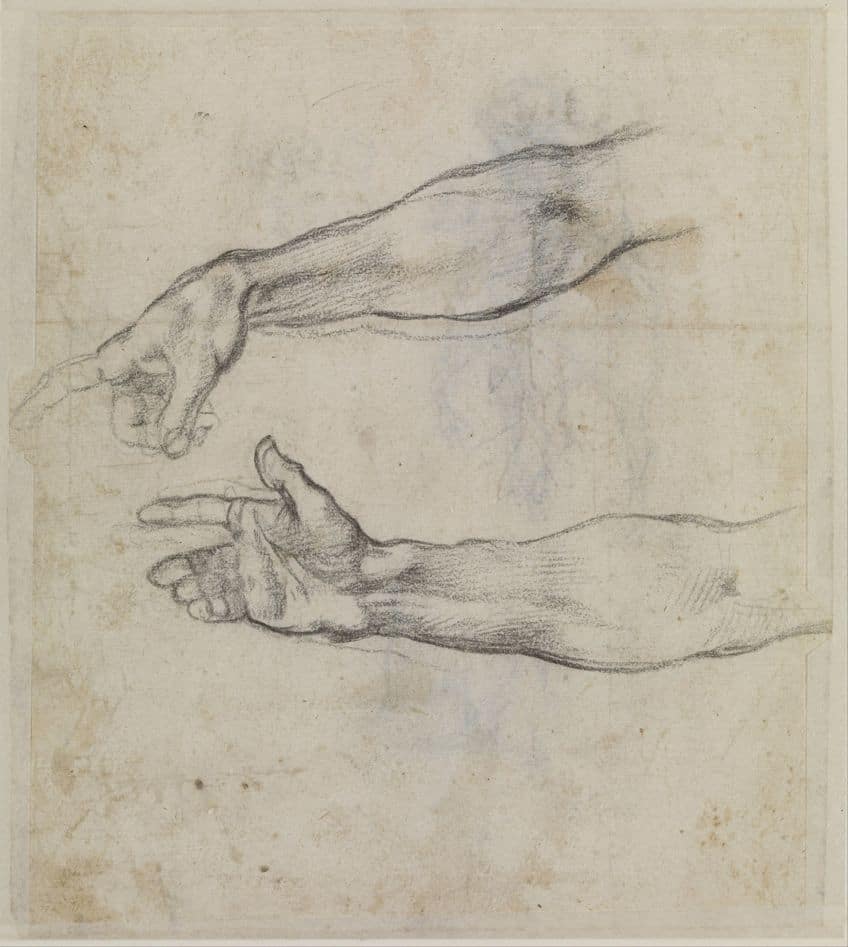
Why Michelangelo’s Sketches Were Significant
The famous Italian artist, Michelangelo, was widely recognized as one of the best draftsmen of his era, with remarkable proficiency in depicting the human figure in his drawings. Michelangelo’s figure drawings accurately portrayed the human body, employing line and shade to produce a lifelike feeling of volume and three-dimensionality. Michelangelo was equally gifted at conveying passion and expression via his drawings.
His works were able to portray the complete spectrum of human emotion with an extraordinary degree of intensity and compassion, whether portraying a placid face or a deformed figure in anguish.
Michelangelo’s sketches shaped the development of European artwork during the Renaissance and well beyond. His dramatic and emotive style, along with his technical prowess and intimate knowledge of the human form, greatly influenced his generation of painters. Michelangelo’s pencil drawings were highly prized by collectors and clients all across Europe, and many were reproduced and duplicated by other painters. Several notable artists, such as Leonardo da Vinci, Raphael, and Titian, were influenced by him.
Insight Into Michelangelo’s Creative Process
Michelangelo’s drawings reveal his preliminary ideas and concepts, as well as his developing theories and modifications. We can observe how he ended up working through multiple compositional and thematic issues by analyzing his own drawings, and experimenting with various ideas until he got the perfect outcome. For instance, we are able to observe how he started experimenting with various poses and arrangements of figures in his drawings for the Sistine Chapel ceiling, tweaking and adjusting his ideas until he eventually ended up with the famous fresco that we know and love today. Michelangelo’s sketches also demonstrate his working processes and techniques. We are able to examine how he utilized many mediums to achieve various effects and textures, such as chalk, pen & ink, and charcoal.

Development of Technical Skills for Realistic Representation
Michelangelo analyzed the anatomical framework of human beings in his drawings, usually with unparalleled detail and accuracy for the time. Michelangelo’s thorough comprehension of human anatomy was perhaps his most significant technical accomplishment. He dissected corpses in an attempt to fully understand how the body works, and Michelangelo’s figure drawings regularly display incredibly detailed representations of muscles, skeletons, and other anatomical features. Michelangelo’s technical ability and grasp of anatomy were crucial not just to his personal creative accomplishments, but also to the advancement of technical anatomy drawing in general.
His primary focus on drawing from life and meticulous observation of the natural world contributed to the establishment of a new benchmark for anatomical precision and verisimilitude in art, which had a significant impact on the development of Western art in the subsequent centuries.
The Various Types of Michelangelo Sketches
As discussed above, Michelangelo’s figure drawings were regarded as a crucial aspect of his artistic output and served to bring a deeper understanding of our anatomy to public consciousness. However, Michelangelo’s sketches extended far beyond a sketchpad for figuring out the accurate representation of figures for his paintings. He also used them as studies for his sculptures and architectural projects.

Sculpture and Architecture
Sculpture studies are one of the most important types of sketches that Michelangelo made. While being an incredible painter, he was best known as a highly-skilled sculptor, and many of his sketches served as preparatory work for his sculptures. These sketches typically have the same meticulous detail and anatomical precision as his figure studies, but with a focus on the form and the interplay of light and shadow on the object’s surface.
Michelangelo also produced various architectural sketches.
He worked on several significant architectural assignments, such as the designing of the dome of St. Peter’s Basilica in Rome, and he produced a multitude of sketches to help him refine his concepts and communicate them with his partners. Michelangelo also produced a range of other drawings, such as landscape studies, studies of plants and animals, and drawings of mythical or biblical events. These drawings demonstrate his range and capacity to portray a wide diverse range of subject matter with exceptional skill.
Example of Michelangelo’s Drawings
In 1504, Michelangelo was commissioned to paint a fresco in the Palazzo della Signoria in Florence. The theme of the piece was to be the Battle of Cascina and was to be painted in the Great Council Chamber. As part of the preparatory work, he produced many full-scale drawings, such as Striding Male Nude, and Anatomical Details (1504). The artist often drew full-scale sketches of portions of his compositions, but the pieces were never fully completed. Many of these enormous drawings, which were admired and often studied, were eventually left in tatters due to over-enthusiastic copyists.
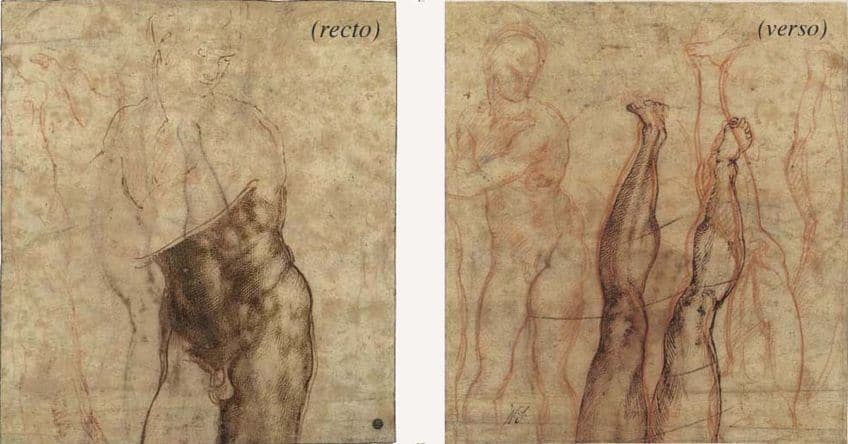
Unlike the majority of Renaissance painters, who learned about human anatomy through antique sculpture and living models, Michelangelo took part in dissections. According to the biographer Ascanio Condivi, Michelangelo first studied corpses when he was in his late teens at the convent of Santo Spirito in Florence. Michelangelo’s focus on anatomy was limited to bones and muscles rather than organs. His extant anatomical drawings, such as Four Studies of a Left Leg, 1520, demonstrate his comprehensive mastery of specific muscles, particularly those of the limbs. Michelangelo was able to understand how the surface and shape of the body alter when one moved thanks to the dissections. This understanding was essential in the production of his iconic nude sculptures.
Michelangelo’s Styles and Techniques
Michelangelo’s drawings are noted for their unique style, which combines forceful, expressive lines with meticulous, delicate details. Michelangelo’s sketches are full of vitality and movement, with characters that appear to be in motion or in deep emotional states. The utilization of contour lines is a significant component of Michelangelo’s work. He defined the proportions and curves of his figures with broad, sweeping lines, accentuating their musculature and generating a feeling of tension.
Simultaneously, he utilized more delicate, subtle lines to depict the finer features of the human body, such as the contours and shadowing of the face or the tiny veins and tendons of the hands.
Michelangelo’s drawings are also particularly notable for their composition and balance. Even when portraying complicated, dynamic situations, he was good at arranging his characters on paper in ways that produced balance. He often structured his compositions using diagonals and powerful geometric patterns, creating a depth that draws the observer into the image.
Techniques
Michelangelo employed a wide range of techniques in his drawings, many of which were revolutionary at the time. He mastered the technique of chiaroscuro, which uses light and shadow to give an illusion of depth and dimension. He employed strong contrasts of light and dark to add drama to his drawings, as well as to give his figures a sculptural appearance. He also employed cross-hatching to produce shading and texture by overlapping a succession of parallel lines. He used crosshatching to add dimension to his drawings by creating minor changes in tone.
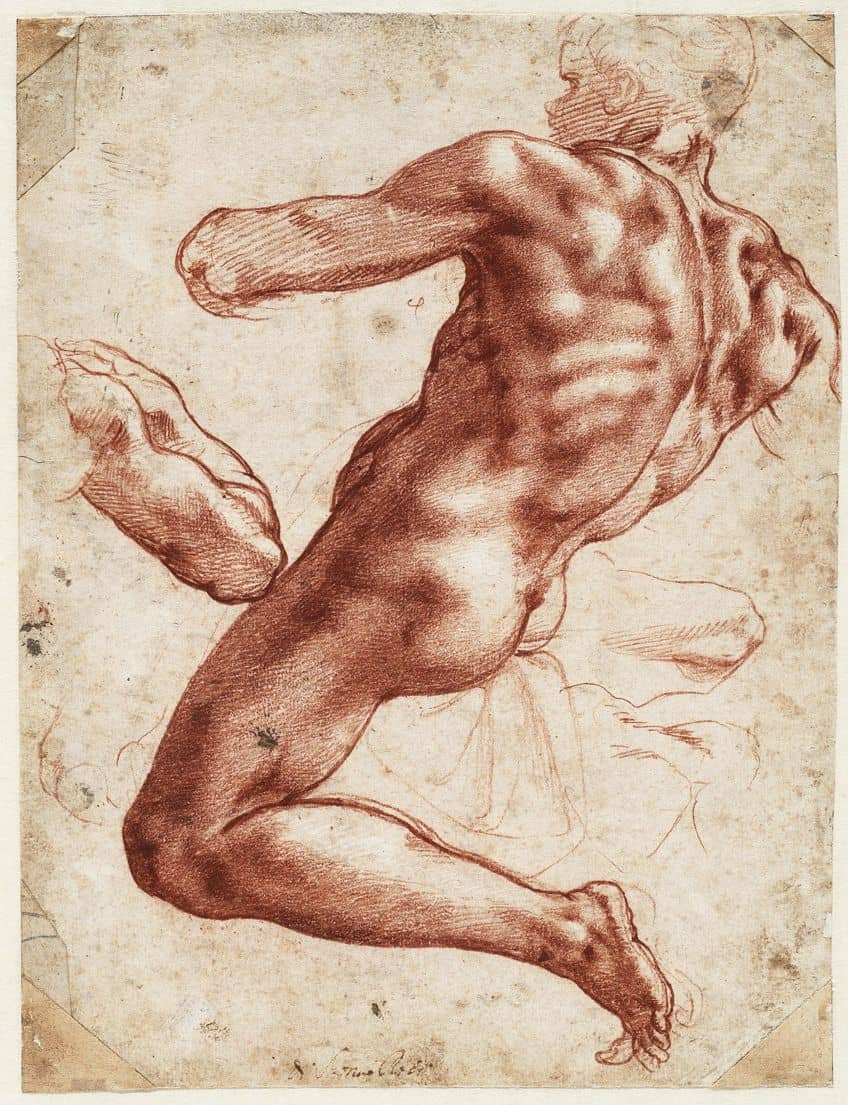
Michelangelo also practiced contour sketching, which included drawing the outlines of his models with a single line. He was able to capture the shapes of his figures with great clarity and precision using this approach. In his works, he typically utilized red and black chalk, which allowed him to produce rich, velvety textures as well as a variety of subtle tints and tones. Michelangelo’s designs were often smudged with his fingers or a towel to achieve a smooth, blended look. This technique assisted him in creating depth and softening the edges of his sculptures.
The Legacy of Michelangelo’s Drawings
Michelangelo’s drawings had a huge influence on the painters that came after him during the Renaissance and well beyond. Numerous artists turned to his works as a model of technical proficiency and aesthetic accomplishment, attempting to mimic his style and techniques in their own artworks. Michelangelo’s sketches, for instance, strongly impacted Mannerism painter Jacopo Pontormo’s use of powerful, emotive lines and dynamic arrangements. Furthermore, Michelangelo’s robust and muscular figures influenced the Baroque painter Peter Paul Rubens, who often used his artwork as a model for his own portrayals of the human form. Michelangelo’s drawings, in addition to these direct influences, contributed to establishing an unprecedented level of technical aptitude in the discipline of drawing.
His command of anatomy, perspectives, and composition served to raise drawing to a new level of significance, inspiring numerous artists to push themselves to succeed in this medium.
The Lasting Influence of Michelangelo’s Sketches
Drawing, thanks to Michelangelo’s talents, became a respected and appreciated art form in its own right, instead of being merely a preliminary tool for other mediums. Drawing’s enduring prominence in modern art illustrates this legacy. Michelangelo’s style and method influenced the evolution of skill in the 16th century, mainly the High Renaissance and Mannerism styles. The emphasis in these genres was on glorified, heroic characters, dynamic arrangements, and stress on the human form. Michelangelo’s sculpture, notably his use of the “non-finito” technique (in which a piece of art is purposefully left incomplete), contributed to the medium’s development and pushed the bounds of what was possible.
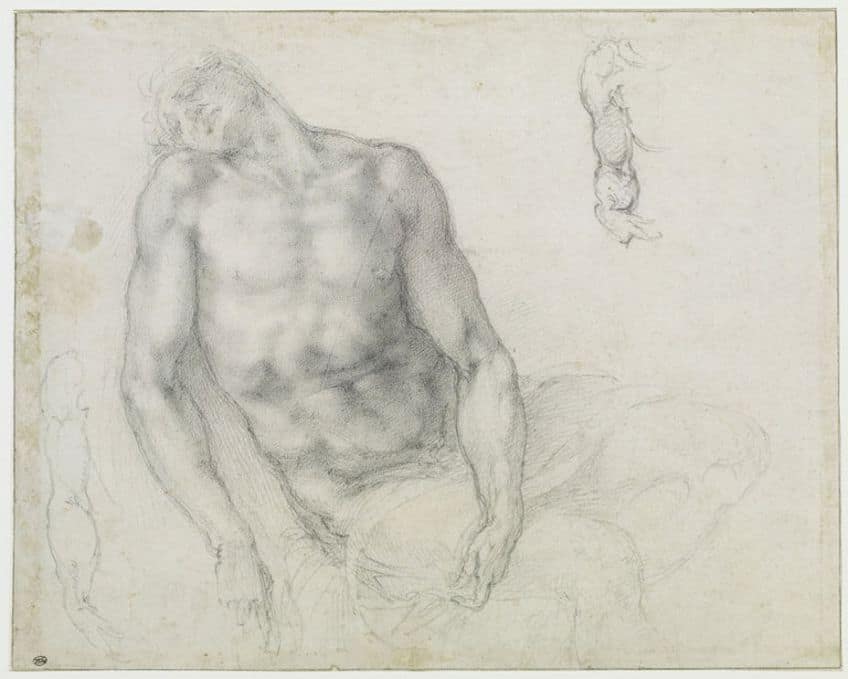
Michelangelo’s architectural ability is evident in his designs for buildings like the Laurentian Library and St. Peter’s Basilica. His utilization of classical forms and epic scale contributed to the definition of the Baroque style, which dominated Europe in the 17th and 18th centuries. Michelangelo’s drawings are still admired and examined by artists, researchers, and art enthusiasts all around the world. His contributions to art and culture were incalculable, and his legacy is a tribute to the strength of human ingenuity and aesthetic vision.
Michelangelo will always be remembered for his contributions to painting, sculpture, and architecture, and all of these disciplines were built around his preliminary sketches. Today, we recognize the role of Michelangelo’s drawings in shaping the way we create art. The legacy of Michelangelo’s drawings left an enduring impression on the art world since they were first created up to the modern era.
Frequently Asked Questions
Why Did Michelangelo Destroy His Drawings?
According to one theory, he was an exceptionally private person who was highly concerned about his own creative reputation. He may have destroyed his sketches as he did not want anybody to see them and possibly pass judgment on his work. It’s likely that he considered his drawings as flawed or incomplete, and didn’t want them to be associated with his actual ability. Another belief is that Michelangelo destroyed his sketches to prevent others from copying his creative ideas and skills. There were no copyright rules to protect an artist’s creations at the time, and it was normal for artists to steal and duplicate ideas from one another.
Why Did Michelangelo Make Sketches?
The artist mostly used them as a way to play around with various ideas and techniques. His drawings were used as detailed studies of the human anatomy, as well as a sketchpad for compositional arrangements. His architectural and sculptural projects were also first conceptualized using sketches.
Isabella studied at the University of Cape Town in South Africa and graduated with a Bachelor of Arts majoring in English Literature & Language and Psychology. Throughout her undergraduate years, she took Art History as an additional subject and absolutely loved it. Building on from her art history knowledge that began in high school, art has always been a particular area of fascination for her. From learning about artworks previously unknown to her, or sharpening her existing understanding of specific works, the ability to continue learning within this interesting sphere excites her greatly.
Her focal points of interest in art history encompass profiling specific artists and art movements, as it is these areas where she is able to really dig deep into the rich narrative of the art world. Additionally, she particularly enjoys exploring the different artistic styles of the 20th century, as well as the important impact that female artists have had on the development of art history.
Learn more about Isabella Meyer and the Art in Context Team.
Cite this Article
Isabella, Meyer, “Michelangelo Drawings – Famous Michelangelo Sketches.” Art in Context. May 17, 2023. URL: https://artincontext.org/michelangelo-drawings/
Meyer, I. (2023, 17 May). Michelangelo Drawings – Famous Michelangelo Sketches. Art in Context. https://artincontext.org/michelangelo-drawings/
Meyer, Isabella. “Michelangelo Drawings – Famous Michelangelo Sketches.” Art in Context, May 17, 2023. https://artincontext.org/michelangelo-drawings/.


